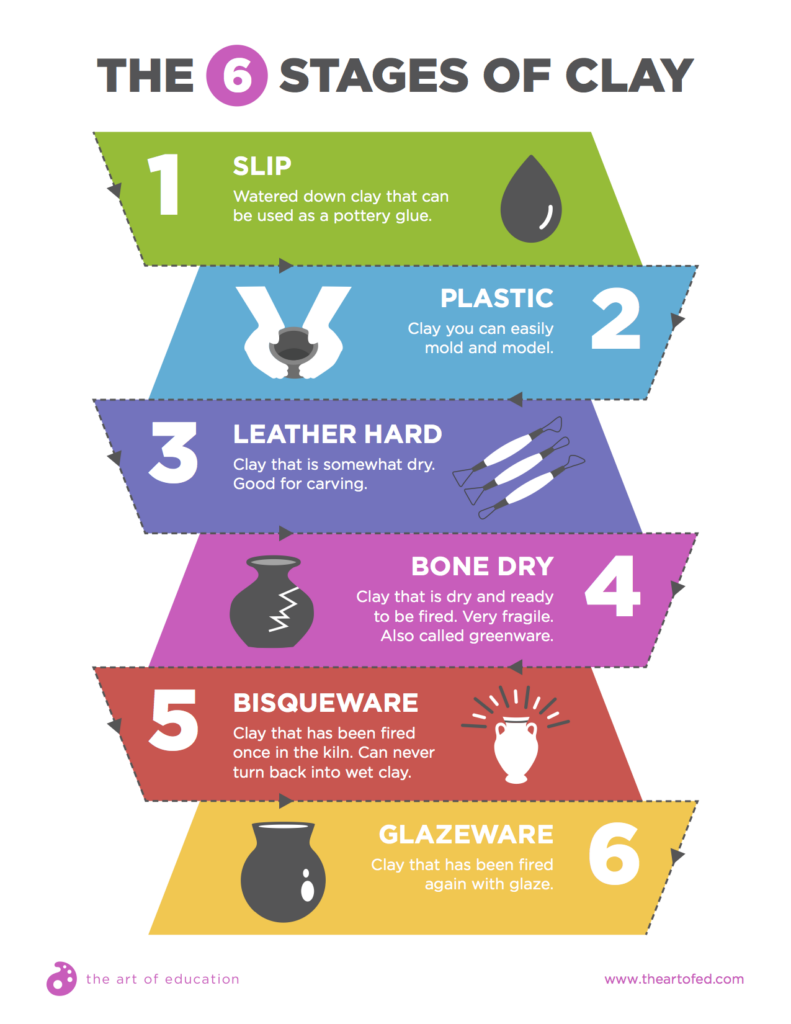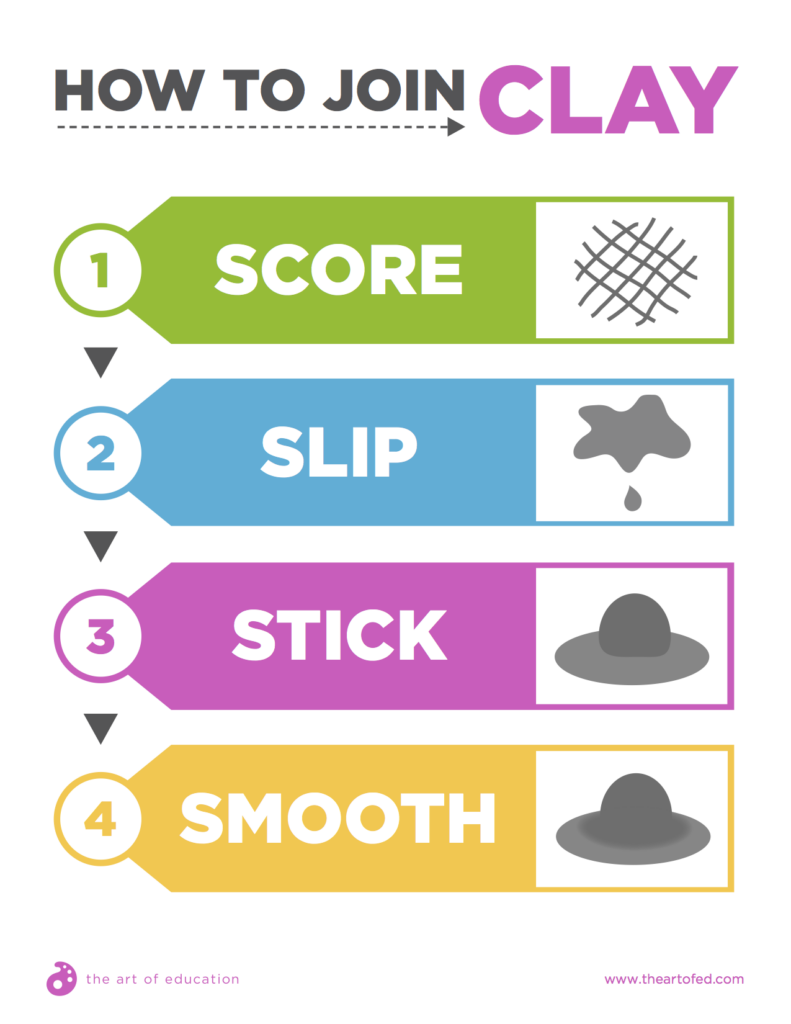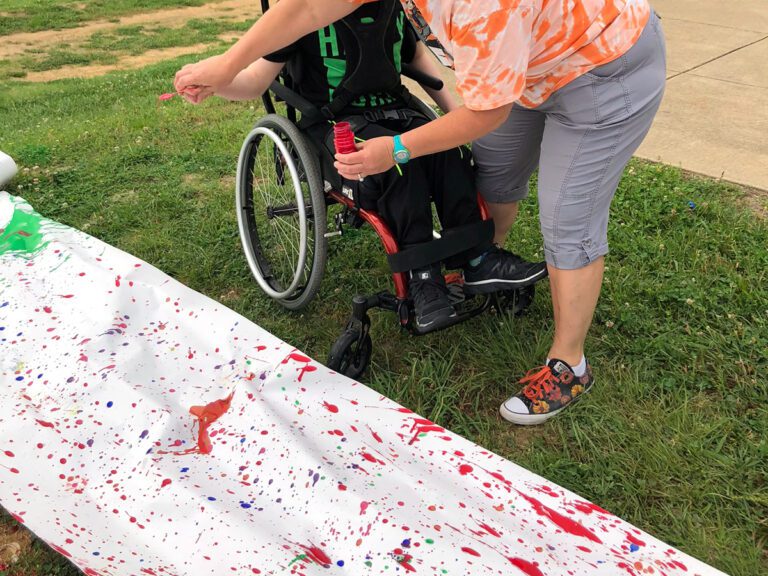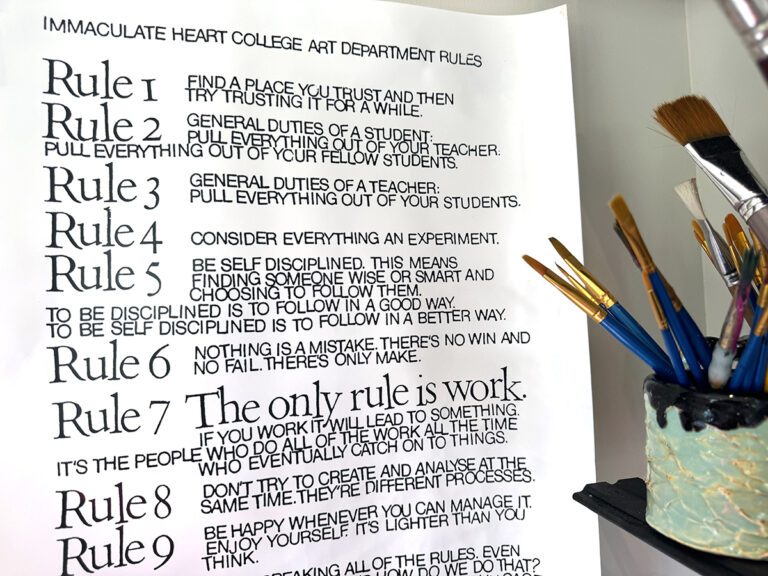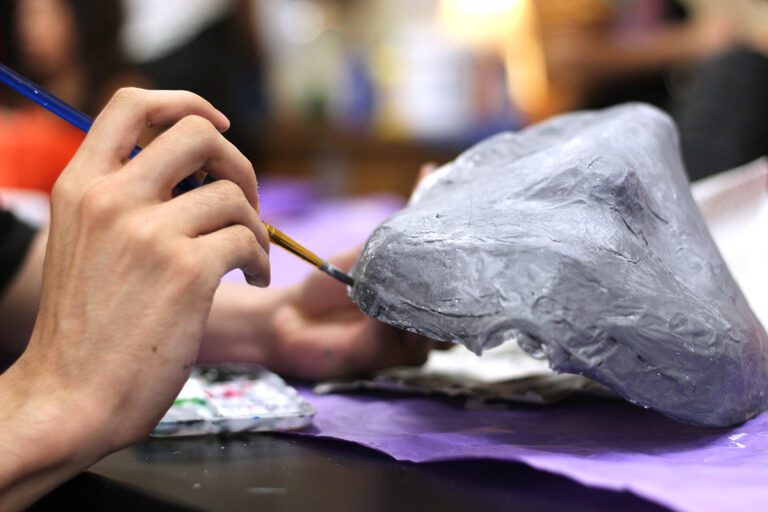Many people can’t wrap their heads around having a clay center for students to work independently in their classroom. Whether you are a TAB teacher looking to open a full-time clay center or want to provide your students with a clay center for another reason, I have some tips for you!
How to Successfully Open a Clay Center
Spark Students’ Imagination
Clay is fascinating not only because of it’s magical malleability but also because it’s essentially just a type of dirt! Spark kids’ imagination by sharing some cool information. You might include where clay comes from and the science behind how it goes through all the different stages from beginning to completion.
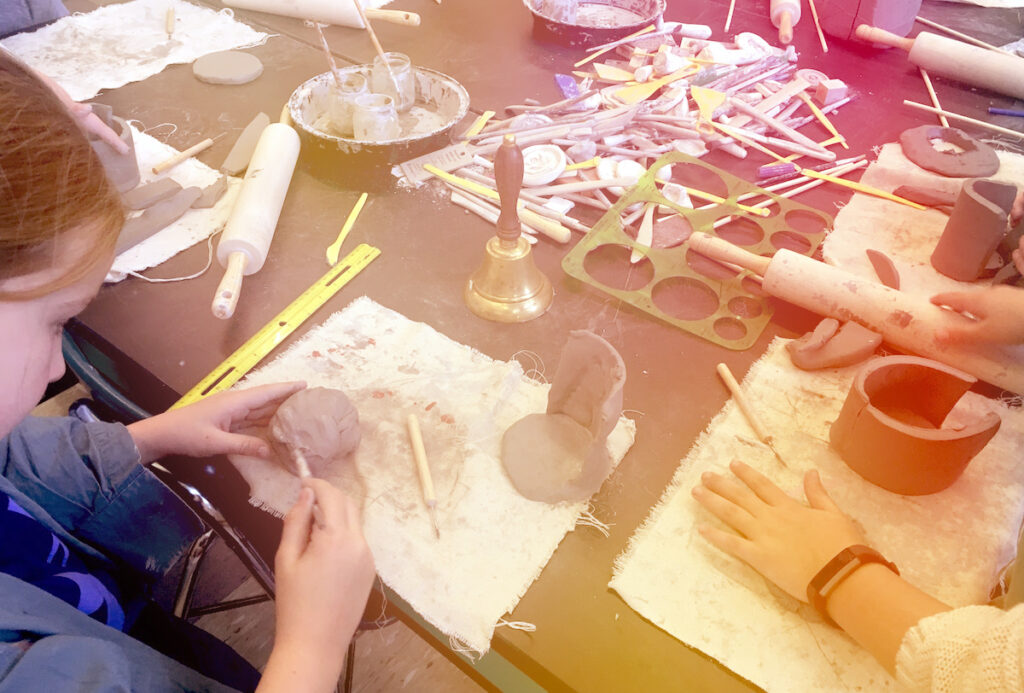
Keep Your Space Simple and Inspiring
Students should be able to easily and safely set up and clean up the clay space without assistance. Keep it simple and make sure materials are accessible and organized.
Provide students with:
- Smocks
- Canvas mats (teach them how to safely dispose of clay dust)
- Pre-rolled clay spheres
- Clay tools
- Slip
- A way to label their work
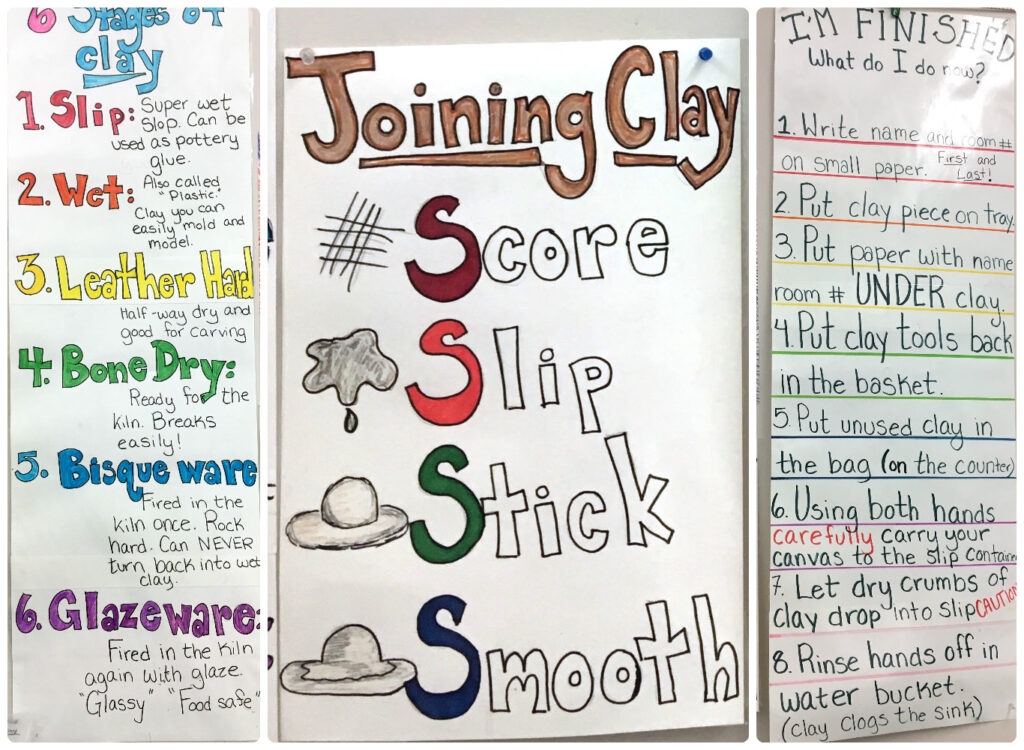
You will also want to add information to your center to help supplement student learning and growth. Here are some ideas.
- Label materials with photos and words.
- Create menus of available tools and materials.
- Display famous artwork for inspiration.
- Create “how-to” posters or anchor charts for concepts you want students to try.
You can download a sample Stages of Clay visual and a sample How to Join Clay visual below!
Provide a Routine
Set up a predictable clay routine and teach it to your kids on the first day. Make sure it’s easy to follow and allows them to work in the space independently and safely. The goal is to cut out the middleman and get kids comfortable self-directing as artists.
It might sound something like this:
“First, grab a smock and a canvas mat. Notice that the person before you put it away flat so it’s not so wrinkly. Then grab a clay sphere to work with. If you have extra clay when you’re done, put it in the bag labeled “extra clay.” If you need more clay you can take it from the bag labeled “extra clay.”
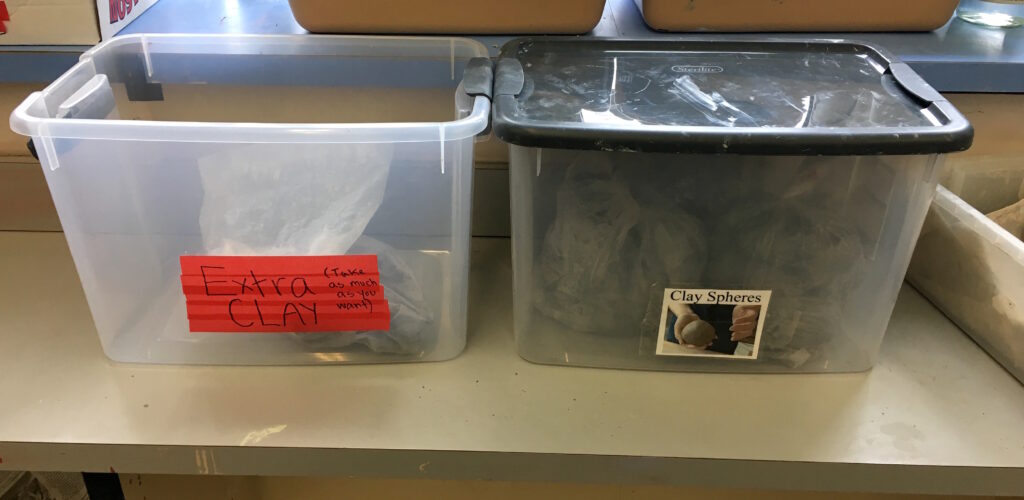
As you decide how to set up a routine that works in your space, remember these important things:
- Teach kids that clay dust in the air can be harmful to breathe and establish routines to keep clay dust out of the air and off of the floor.
- Student work needs to be clearly labeled with initials and room codes. For younger kiddos, you might consider having them write their initials and room numbers on scraps of paper and place them under their projects. That way, you can legibly carve in the information later. Older students may be able to carve them in with needle tools on their own.
- Clay can clog your sinks so keep a bowl in the bottom of your sink or ask kids to rinse their hands in a separate bucket before going to the sink.
- Thick clay can burst in the kiln and thin pieces can crack easily. I teach my kids the “cowabunga rule.” Clay may be no thicker than your thumb and no thinner than your pinky.
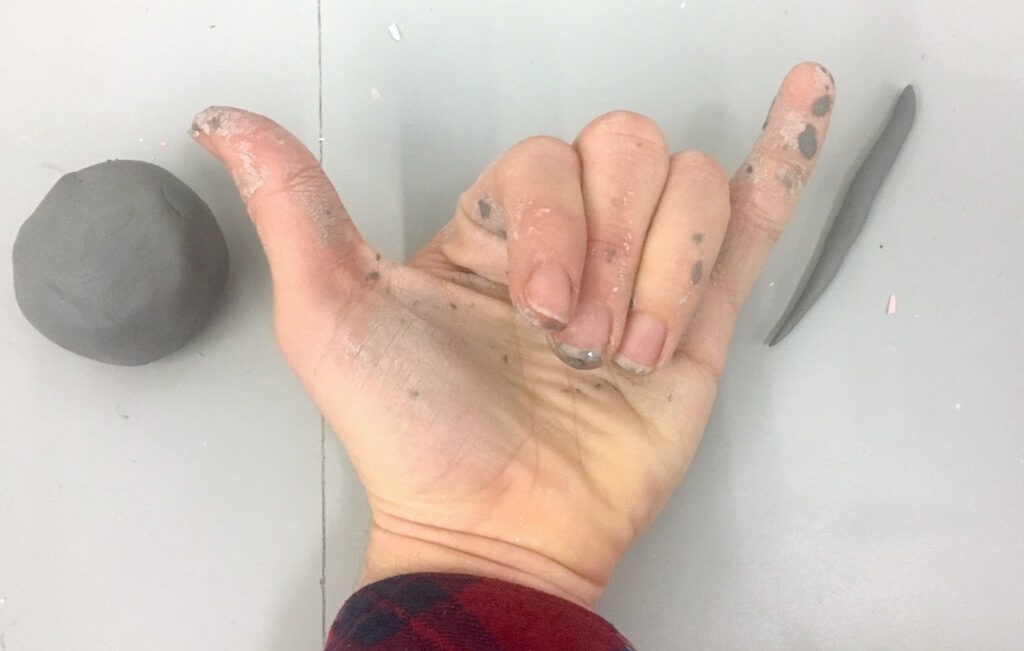
Limit the Number of Students at the Center
Limit the number of students that can work at the clay center so that it doesn’t become overcrowded. If the majority of your students want to work there, you may have to come up with a rotation system so everyone gets a fair chance.
If your usual class policy is that students can work wherever they want to, some students may struggle with a more rigid schedule. However, the sooner you set your expectations, the easier it gets.
Teach the Basics, Provide Challenges, and Keep it Low Pressure
On my first day in the clay center, students who are staying are taught how to make a pinch pot. Then I challenge them to make a creature, item, creation, etc. using a pinch pot as their starting point.
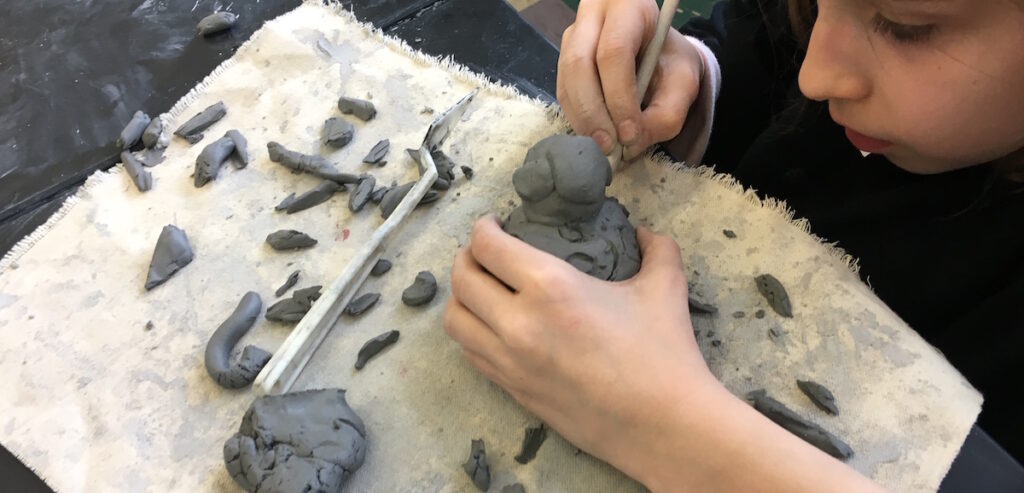
Next, I teach them how to slip, score, smooth and stick pieces to make them stay together. I also tell them their first day in the center can be playful and they can smush up their piece at the end if they decide they want to try again at a later date.
Go Easy on Yourself
Clay is a tricky medium when it comes to management but is a favorite in the art room! To account for the cost of supplies and your sanity, you can open your ceramics center later in the year or offer it as an ephemeral center. Ephemeral centers last for a short period of time and are great for offering kids a taste of difficult to manage or expensive materials.
You don’t have to have a kiln for students to experience clay. Open up a center with air dry clay, modeling/plasticine clay, or even Play Dough. (Keep in mind that Play Dough contains gluten.)
Students may use glaze, watercolor paint and Mod Podge, tempera or acrylic paint, or even markers to complete their clay work. To keep second firings to a minimum, you may want to limit glazing to only functional pieces.
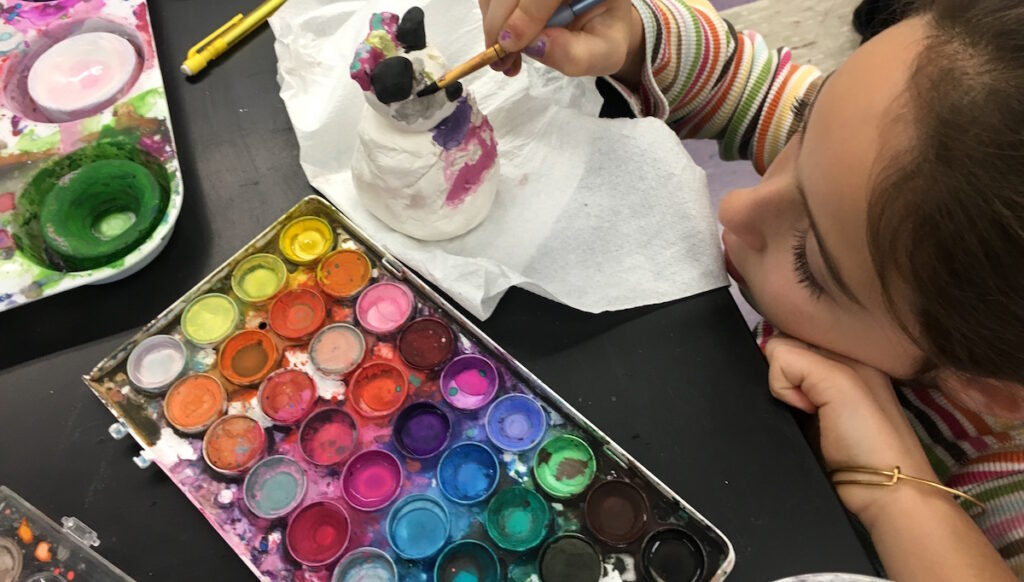
I hope these ideas show you one way to open a clay center. However, this is not the only way! There is a huge community of TAB teachers sharing out there, so browse TAB resources for ceramic center ideas. I’ve listed a number of my favorite resources below. Each provides ideas other teachers have shared you can adapt for your classroom. And remember, this is just a part of the process–you don’t have to have everything you want on the first day of class!
More Ceramics Center Inspiration:
- TeachingForArtisticBehavior.org
- Engaging Learners Through Artmaking by Katherine M. Douglas and Diane B. Jaquith
- The Learner-Directed Classroom by Diane B. Jaquith and Nan E Hathaway
- Building a Ceramics Program PRO Pack in PRO Learning
- Hand-Built Ceramics PRO Pack in PRO Learning
- Critical Kiln Safety PRO Pack in PRO Learning
- Clay and Kids: The Natural Way to Learn by Marvin Bartel
- Kinder Art Page for Clay Vocabulary
Do you have any ideas to share about your ceramics center in a TAB classroom?
How do you teach ceramics?
Magazine articles and podcasts are opinions of professional education contributors and do not necessarily represent the position of the Art of Education University (AOEU) or its academic offerings. Contributors use terms in the way they are most often talked about in the scope of their educational experiences.

